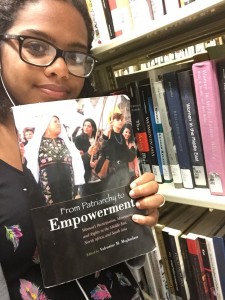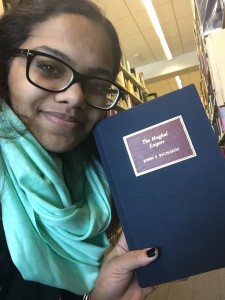
From Patriarchy to Empowerment
To find this book, I searched Women’s Rights and Africa. I was interested in learning about Women’s Rights in other parts of the world as we have touched upon Women’s suffrage in England and America. I thought it would be interesting to compare and contrast the timing and its impact in other nations and British colonies. On the shelves surrounding the book where other books relating to women and women’s rights. One interesting book title was Women in Asia and another was Women in Middle Eastern History. The book caught my eye because of the picture on the cover. It’s women wearing 90s style clothing and holding signs in arabic. When flipping through the book I found a couple chapters to be very interesting including Women in Political Parties in Turkey; Feminist Organizing in Tunisia; Women, Communications, and Democratization in Morocco, and Women’s Empowerment in India. The book also has tables and charts including one that measured women’s civil, political, socioeconomic, and cultural participation and rights and another that I found interesting was one attitudes on girls’ education by educated girls’ and parents’. The book is divided three parts focusing on Political Processes and Women’s Participation, Economic, Social, and Cultural Participation, and Violence, Peace, and Women’s Human Rights. Each section has chapters written by different experts focusing on the overarching topic in a specific nation. When flipping through the book, I found it very interesting to read about how the struggle for Women’s Rights in Tunisia stems from their time under French colonial rule. I think this book would be a great source to read to compliment what we have read about Women’s suffrage in the UK and the U.S.
Moghadam, Valentine M. “From Patriarchy to Empowerment: Women’s Participation, Movements, and Rights in the Middle East, North Africa, and South Asia.” Syracus, NY. Syracuse UP, 2007. Print.


